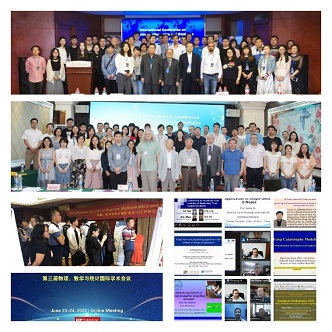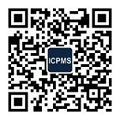Keynote Speaker
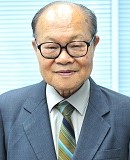 Prof Lixing Zhou
Prof Lixing ZhouDepartment of Engineering Mechanics, Tsinghua University, China
Speech Title: Progress in Validation of the SOM Combustion Model
Abstract: Turbulent combustion models have been studied for many years. Present models either are lack of generality or computationally too expensive. An economical and reasonable model for engineering application remains to be studied. A second-order moment (SOM) combustion model was proposed by the present authors and has been applied to both Reynolds-averaged Navier-Stokes modeling (RANS modeling) and large-eddy simulation (LES) of non-premixed jet, swirling and premixed bluff-body flames, and was well accessed by experimental results. To further theoretically justify the SOM model, its validation was made by direct numerical simulation (DNS). This lecture gives an overview of validation of the SOM turbulent combustion model by DNS in various flames.
About the Speaker: Dr. Lixing Zhou, is a Professor in the Department of Engineering Mechanics, Tsinghua University, Beijing, China, a leading scientist in CFD modeling of multiphase flows and combustion in China. He got his Ph.D. degree from the Leningrad Polytechnic University, former USSR in 1961. His main research field is numerical simulation of multiphase turbulent flows and combustion. His main contribution is the theory of particle turbulence stronger than gas turbulence and a new theory of turbulence-chemistry interaction-second-order moment combustion model. He published two monographs in English and 5 monographs in Chinese, more than 360 technical papers in periodic journals. He won the China National Awards of Natural Science in 2007.
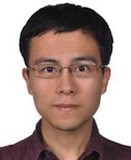 Prof Le Fang
Prof Le FangEcole Centrale Pekin, Beihang University, China
https://shi.buaa.edu.cn/lefang/zh_CN/index.htm
Speech Title: Background anisotropy problem under periodical boundary conditions
Abstract: In order to simulate isotropic turbulent flows, numerical simulations usually use periodical boundary conditions. However, we find that periodical boundary conditions in two-dimensional or higher-dimensional cases will lead to large-scale background anisotropy, which prevents us from obtaining real isotropic turbulence. Theoretical analysis shows that this background anisotropy is mainly related to the shape of energy spectrum. In two-dimensional cases, we design a fast Fourier algorithm based on hexagonal mesh in spectral space. This algorithm can be used in pseudo-spectral calculations of turbulence to reduce the background anisotropy.
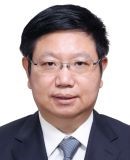 Prof Rongming Wang
Prof Rongming WangBeijing University of Science and Technology, China
http://shuli.ustb.edu.cn/shiziduiwu/jiaoshixinxi/2018-03-28/218.html
Speech Title: Atom-resolved Structure Evolution Characterization of Transition Metal Nanocrystals and Heterostructures
Abstract: The surface structure, interfacial atomic configuration and structural evolution of magnetic, optical and electrical functional materials were in situ studied by means of ETEM. The surface tensile strain of Ni-Pt nanoflowers was found using the column positioning technology with a picometer precision. With the help of in-situ technique at atomic resolution, it is found that the epitaxial alignment and coalescence of Au nanoparticles on the surface of MoS2 can be accelerated by the irradiation of electron beam. Combining digital dark field and spherical aberration correction technologies, we found that the coexistence of 2-3 nm sized TiO2 two-dimensional nanocrystals and amorphous TiO2, and the formation of ultra-thin TiO2-MoS2 heterostructure are critical to improve the photoelectric properties. It is found that the carrier SiO2 migrates and diffuses on the surface of Co catalyst and forms a SiO2 layer with ordered quartz structure. A single Si atomic layer forms at the interface between Co and SiO2 under CO, CH4 and H2 and CH4 at 750 °C. The strong interaction between Pt and MoS2 supports is also found to regulates the electronic states at the interface and promotes the electrocatalytic hydrogen evolution performance of Pt-MoS2 heterostructures. In-situ characterization also reveals the real activity of NiAu bimetallic catalyst, and expounds the application of advanced in-situ characterization method in the field of crystal catalysis research.
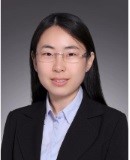 Assoc Prof Jingya Sun
Assoc Prof Jingya SunBeijing Institute of Technolygy
https://me.bit.edu.cn/szdw/jsml/zzgcx/jgwnzzyjs/sssds14/b115016.htm
Speech Title: Ultrafast dynamics observation during femtosecond laser-material interaction
Abstract: In the field of photo-catalysis and photovoltaics, ultrafast dynamical processes including carrier trapping and recombination on materials are among the key factors in determining the overall conversion efficiency. A precise knowledge of these dynamical events on the nanometer and femtosecond scales was until very recently not accessible but is urgently needed for further optimization of the device performance. The cutting-edge ultrafast dynamic observation techniques for investigating these fundamental questions, including time-resolved pump-probe shadowgraphy, time-resolved reflection pump-probe technique, and four-dimensional ultrafast scanning electron microscopy, are comprehensively surveyed. We demonstrate clearly how the surface morphology, grains, defects and nano-structured features can significantly impact the overall dynamical processes on the photoactive-materials, such as GaN, perovskite, silicon and so on. In addition, together with the optical pump-probe technique, the mechanism of ablation of various materials will be also discussed. The consideration of temporal and spatial resolutions is one of the major challenges. Hence, the prospects for technical advancement in this field are discussed finally.
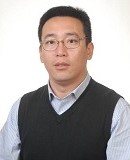 Prof Fujun Zhang
Prof Fujun ZhangBeijing Jiaotong University, China
https://faculty.bjtu.edu.cn/8078/
Speech Title: Recent development of Photomultiplication type organic photodetector
Abstract: Polymer photodetectors (PPDs) present a remarkable commercial potential due to the typical characteristics of flexibility and eco-friendliness. Photomultiplication type PPDs (PM-PPDs) have emerged as the research hotspot in recent years, exhibiting the prominent advantages such as high-sensitivity, low-power consumption and tunable spectral-response-range. PM-PPDs can be obtained on the basis of active layers possessing single charge carrier transport channels, which were firstly reported by Zhang’s group. The weight difference between the donor and the acceptor is dozens of times in active layers of PM-PPDs, which prefer to form some isolated traps for one kind of charge and also retain continuous transport channels for the opposite charge. Ultraviolet (UV) narrowband photodetectors play a critical role in missile detection, flame monitoring, optical communication, etc. It is a great challenge to realize UV narrowband organic photodetectors due to wide photo-harvesting property of organic materials, especially for photomultiplication type organic photodetectors (PM-OPDs). The optimized PM-OPDs coupled with optical microcavity exhibit EQE of 9300% at 350 nm and narrowband response with 33 nm full-width at halfmaximum under −15 V bias. This work indicates that PM-OPDs coupled with optical microcavity should be an efficient strategy for achieving UV narrowband response.
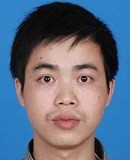 Prof Jianhua Zeng
Prof Jianhua ZengUniversity of Chinese Academy of Sciences, China
https://www.researchgate.net/profile/Jianhua-Zeng-5
Speech Title: Structuring the structures of localized waves in optical and matter-wave media with novel periodic structures
Abstract: The excitations and manipulation of localized waves including various types of solitons are among the paramount and advanced research field in nonlinear physics that generally includes three fields: chaos, solitons and fractals. Particularly, instead of launching the critical collapses in two dimensional focusing systems and 3D supercritical one, novel linear periodic structures in the forms of moiré optical/photonic lattices and nanoscale lattices are nowadays widely introduced to the stabilization of various structures of localized waves like fundamental solitons, gap solitons and vortices, etc. This Keynote speech would deliver the recent progresses of localized waves supported by both novel structures made by his group and beyond.
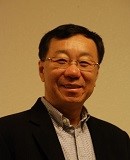 Prof. Anzhong Wang
Prof. Anzhong WangBaylor University, Waco, Texas, USA
Speech Title: A new method to study Quantum Mechanics, cosmology and black holes
Abstract: The WKB method plays an essential role in the development of quantum mechanics (QM). However, it is valid only when certain conditions hold. In the past couple of years, we have systematically developed a new method, the so-called uniform asymptotic approximation method, which is applicable to Schrodinger-like equations, and the upper bound of the errors is known explicitly under each order of the approximations. In particular, it can be as smaller as 0.15% up to the third-order approximation. Applying the method to several well-known cases in QM, we find that significant improvement over the WKB method can be achieved. Recently, this method has also been applied successfully to the studies of gravitational waves, black holes and cosmology.
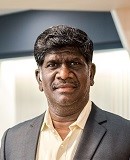 Assoc Prof Elammaran Jayamani
Assoc Prof Elammaran JayamaniSwinburne University of Technology Sarawak campus, Malaysia
Speech Title: Development and application of Dielectric materials and their past, present, and future
Abstract: The complete discoveries of dielectric materials from ceramics to polymer composites and concepts that lead to applying these materials in actual applications are discussed. The basic principles of dielectric behavior in composite systems have been enumerated. The listeners can also understand how models of polarizations are intertwined with composite fabrication to yield the desired dielectric properties, and the combinations of different components in a composite for addressing engineering solutions are thoroughly discussed. Furthermore, the recent discoveries of dielectric composite materials have been classified, and their material properties have also been reviewed. Notable reviews for composites in this article are mainly ceramic-based dielectric composites, polymer-ceramic dielectric composites, natural fiber-reinforced polymer composites (NFRPCs), and bio-based polymer dielectric composites. Lastly, the processing techniques of all the mentioned dielectric materials have been comprehensively reviewed, and their prominent applications have also been discussed.
